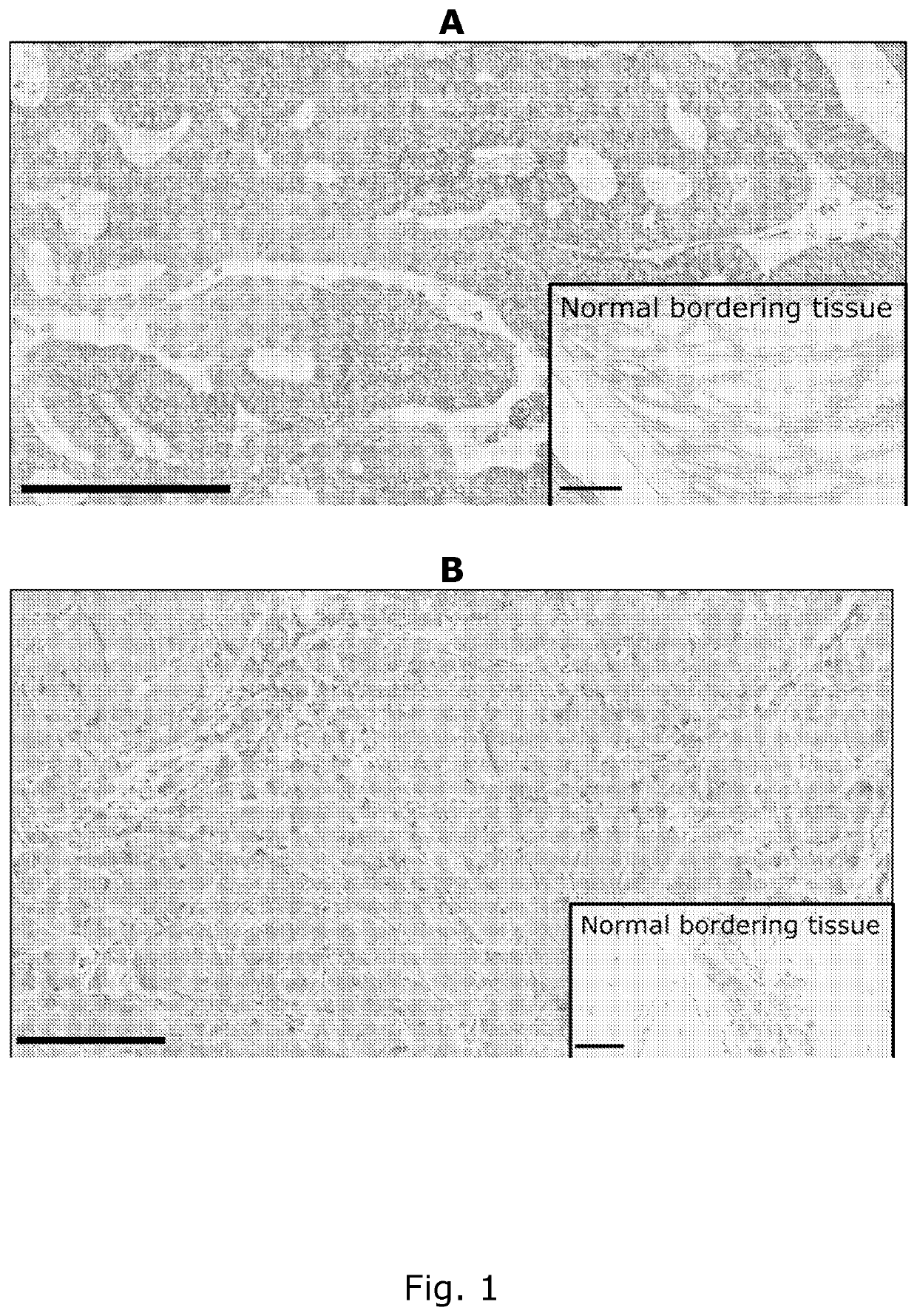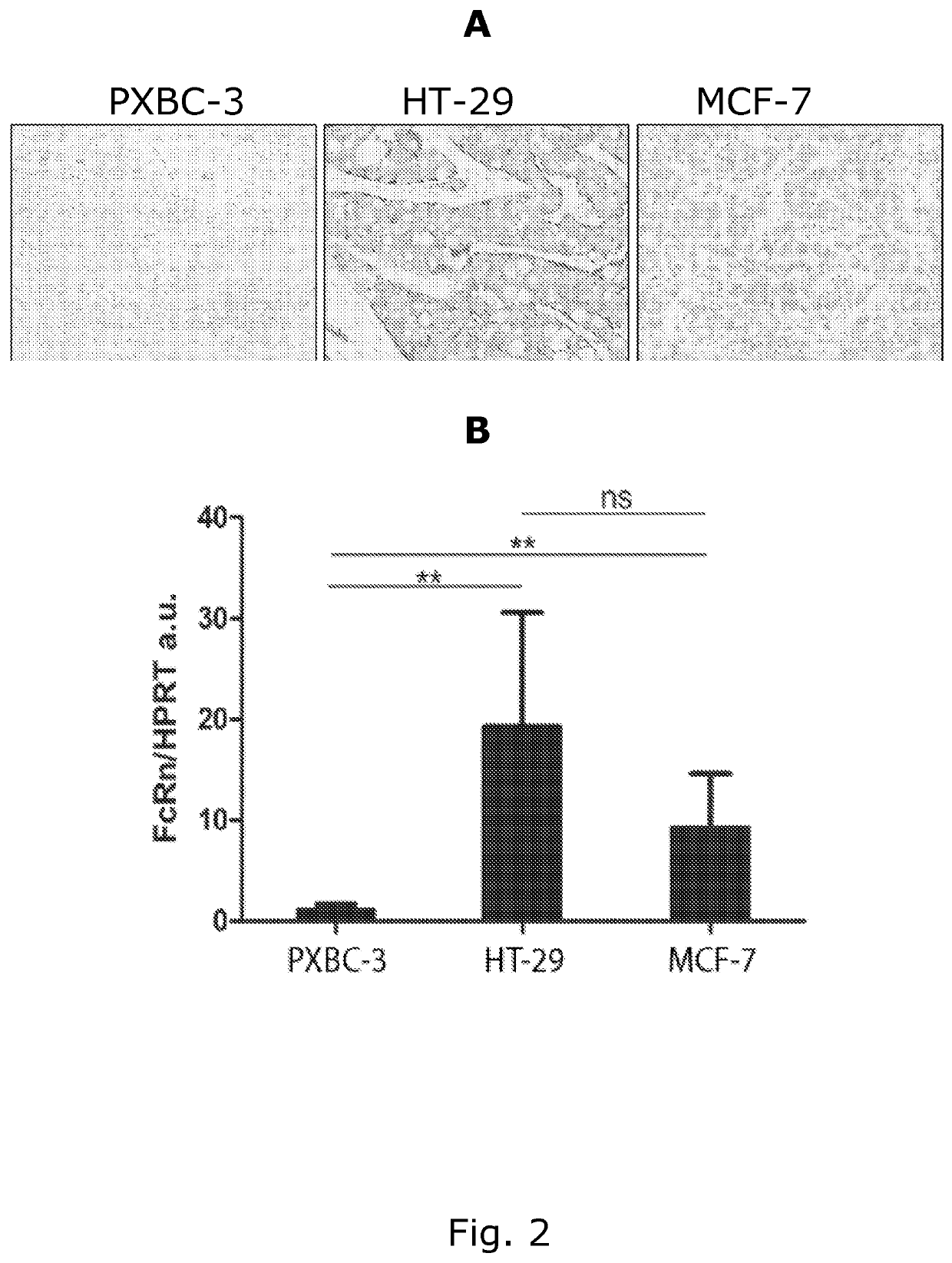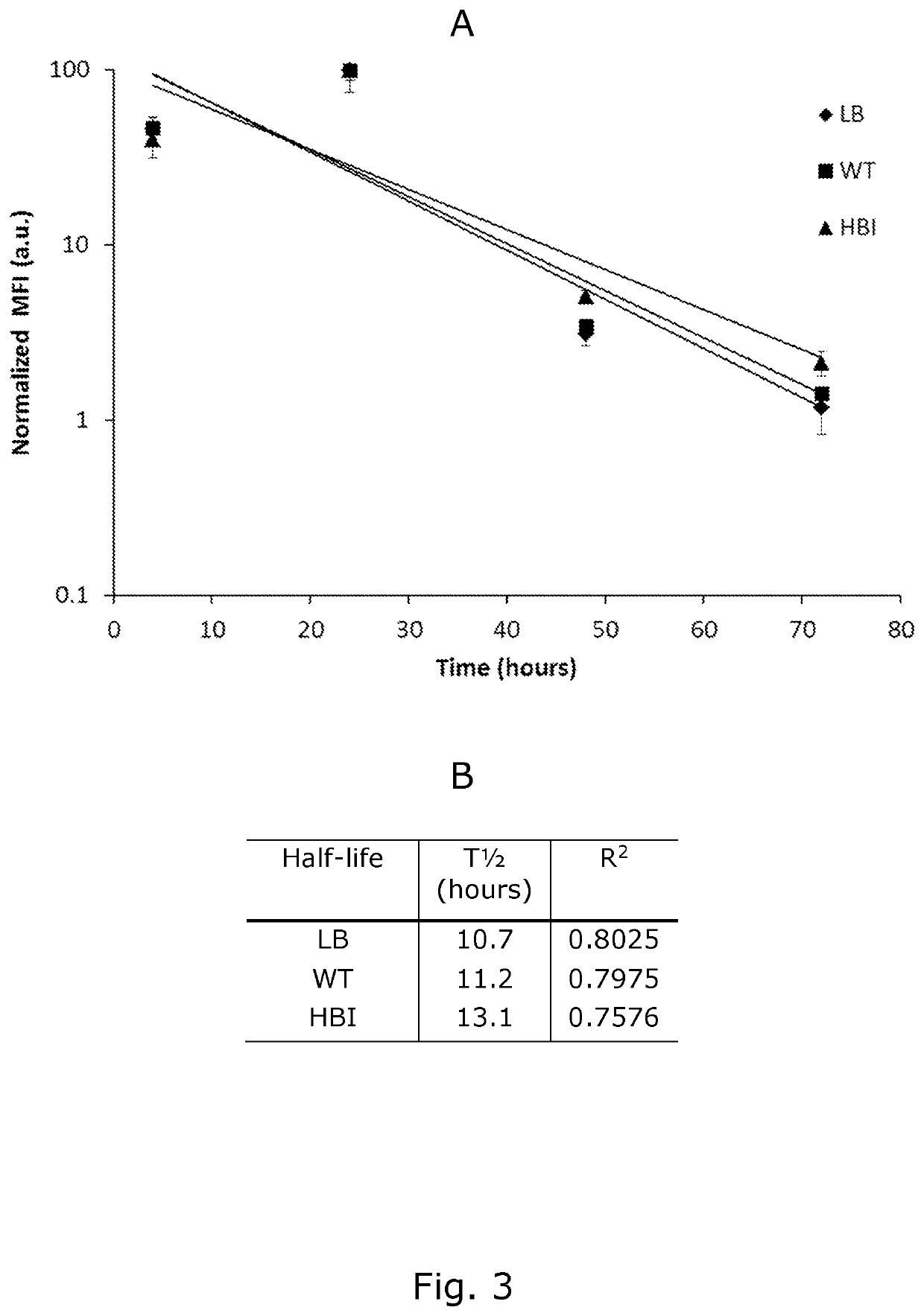Identification and treatment of tumors characterized by an overexpression of the neonatal fc receptor
a tumour and neonatal fc technology, applied in the field of identification of tumours overexpressing the neonatal fc receptor, to achieve the effect of higher fcrn level
- Summary
- Abstract
- Description
- Claims
- Application Information
AI Technical Summary
Benefits of technology
Problems solved by technology
Method used
Image
Examples
example 1
[0222]FcRn Expression in Patient Biopsies
[0223]Aim of Study
[0224]To identify FcRn levels in cancer and healthy tissue.
[0225]Materials and Methods
[0226]Materials
[0227]Two different cancer types were investigated (5 samples per cancer type). These were colon and breast cancer. Healthy bordering tissue was used as control.
[0228]The human cancer tissue samples were provided by The Pathology Institute, Aarhus University Hospital, 8000 Aarhus C, Denmark.
[0229]Immunohistochemical analysis of the human cancer tissue samples Human tissue was formalin fixed and paraffin embedded (FFPE). FFPE human tissue sections were treated with Tissue Clear Xylene substitute (Tissue-Tek / Sakura Finetek) to de-paraffinise slides. Next, slides were rehydrated by gradually decreasing ethanol solutions from 100% to 75% and finally moved to running cold tap water.
[0230]Antigen retrieval was performed in citrate buffer pH 6.0 by heating in a microwave oven at 800 W for 8 min, followed by 560 W for 2×14 min and fi...
example 2
[0237]FcRn expression in human cancer cell lines mouse xenografts
[0238]Aim of Study
[0239]Identification of FcRn overexpression in human cancer xenografts in mice.
[0240]Materials and Methods
[0241]Cancer Models
[0242]PXBC-3 pancreatic cancer cell
[0243]HT-29 human colorectal
[0244]Adenocarcinoma cells
[0245]MCF-7 human breast cancer cells
[0246]Results
[0247]The results presented in FIG. 2 show higher FcRn expression in human colorectal adenocarcinoma cells (HT-29) and human breast cancer cells (MCF-7) compared to PXBC-3 pancreatic cancer cells.
[0248]Conclusion
[0249]FcRn overexpressing cancers can be identified in mice xenografts that can be used for in vivo FcRn binding agent experiments or cancer treatment.
example 3
[0250]Accumulation / targeting of engineered albumin high binders in human xenografts after intravenous injection in mice. Xenograft model 1: Bioluminescent xenografts.
[0251]Aim of Study
[0252]To investigate biodistribution and half-life, and tumour accumulation of albumin variants.
[0253]Materials and Methods
[0254]Albumin Variants
[0255]Alexa Fluor 680 labelled engineered albumin variants were provided by Albumedix Ltd. (Nottingham, UK).[0256]HSA-K573P (High-binder I) (HBI) (SEQ ID NO: 4)[0257]HSA-K500A (Low-binder) (LB) (SEQ ID NO: 6)
[0258]In Vivo Studies
[0259]All animal experiments were performed at the Animal Facility at the Institute of Biomedicine at Health, Aarhus University. All experiments were approved by the Danish Experimental Animal Inspectorate.
[0260]Cell Culture
[0261]The human cancer cell line (MDA-MB-231 / Luc), a luciferase-expressing breast cancer cell line, was used in this study. Cells were maintained in DMEM (4500 mg / L D-glucose, L-glutamine) (Gibco, Life Technologies,...
PUM
| Property | Measurement | Unit |
|---|---|---|
| emission wavelength | aaaaa | aaaaa |
| excitation wavelength | aaaaa | aaaaa |
| pH | aaaaa | aaaaa |
Abstract
Description
Claims
Application Information
 Login to View More
Login to View More - R&D
- Intellectual Property
- Life Sciences
- Materials
- Tech Scout
- Unparalleled Data Quality
- Higher Quality Content
- 60% Fewer Hallucinations
Browse by: Latest US Patents, China's latest patents, Technical Efficacy Thesaurus, Application Domain, Technology Topic, Popular Technical Reports.
© 2025 PatSnap. All rights reserved.Legal|Privacy policy|Modern Slavery Act Transparency Statement|Sitemap|About US| Contact US: help@patsnap.com



